Main menu
Common skin conditions

NEWS
Join DermNet PRO
Read more
Quick links
Authors: Vanessa Ngan, Staff Writer, 2003. Dr Sabrina Sapsford, Clinical Medical Education Fellow, University of Auckland, Auckland, New Zealand. Copy edited by Gus Mitchell. October 2020. Minor update November 2025.
Introduction
Demographics
Causes
Clinical features
Complications
Diagnosis
Differential diagnoses
Treatment
Outcome
Dermatomyositis is an idiopathic inflammatory myopathy characterised by skeletal muscle weakness and skin changes.
Dermatomyositis is uncommon, with an annual incidence of 0.1-6 per population of 100,000. It can affect people of any race, age, and sex; however, women are affected twice as often as men, and Black Americans are more commonly affected than white Americans. It can present in children (see Juvenile dermatomyositis). The peak age group affected in adults is those aged 50–60 years.
Adult-onset dermatomyositis is strongly associated with malignancy; up to 25% of affected adults have an unknown underlying malignancy on diagnosis. The majority are adenocarcinomas.
Dermatomyositis is thought to be caused by a microangiopathy affecting skin and muscle. There is a genetic predisposition to the development of dermatomyositis such as the PTPN22 gene and HLA associations identified include:
Triggers and reported associations have included:
Most patients have disease-associated autoantibodies, suggesting dermatomyositis is an autoimmune condition.
The skin changes of dermatomyositis will often, but not always, precede the muscle weakness. A face rash is the commonest initial skin sign, typically followed by scalp symptoms then the changes on the hands.
Characteristic skin changes of dermatomyositis include:
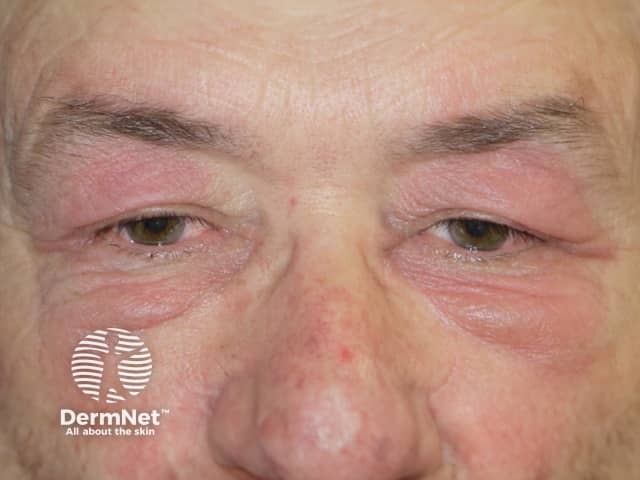
Heliotrope rash
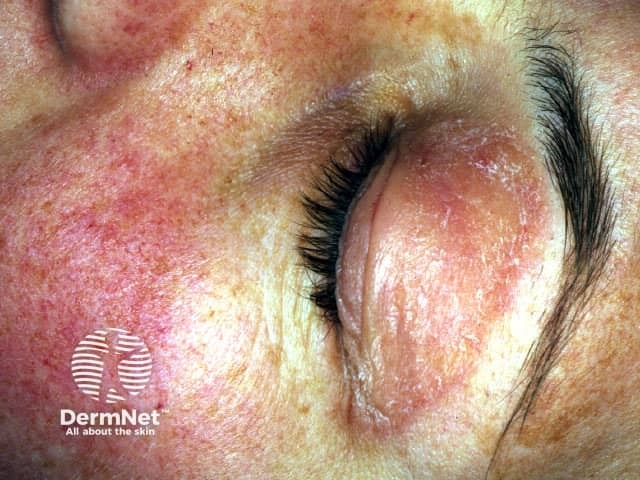
Heliotrope rash
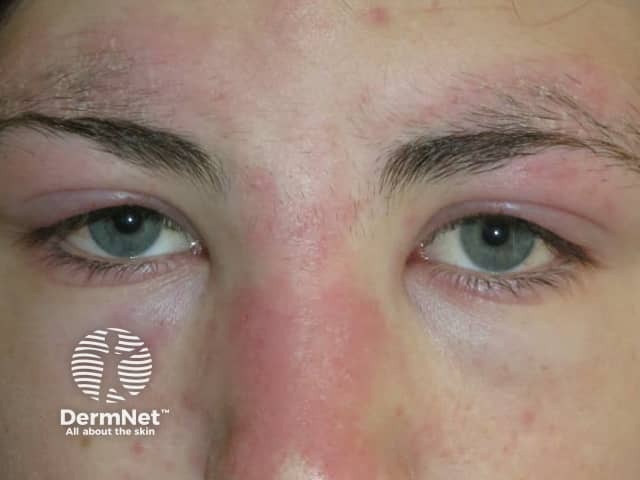
Heliotrope rash
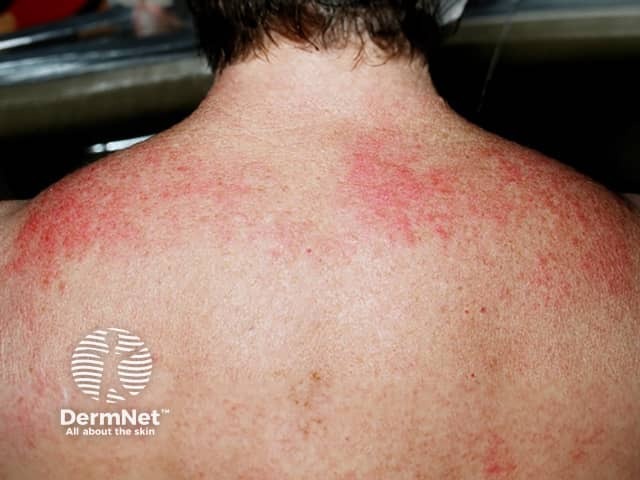
Shawl sign over the shoulder
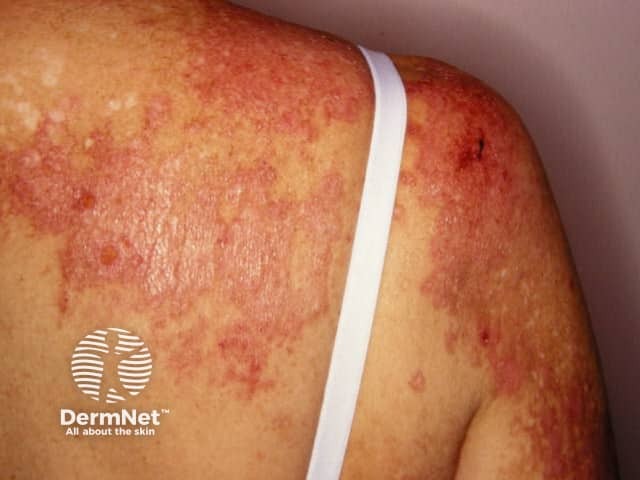
Shawl sign over the upper back
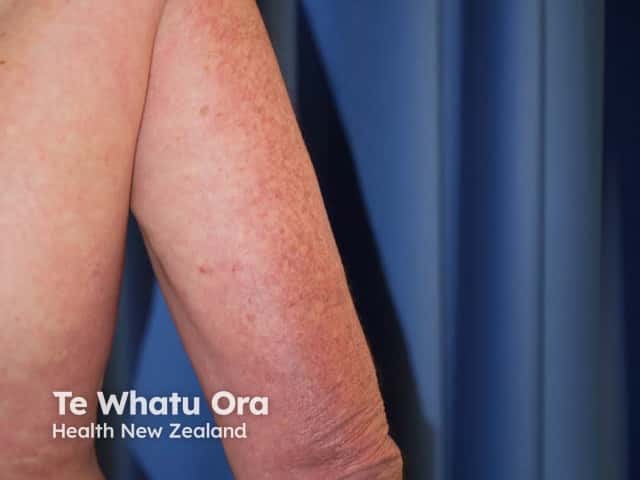
Photosensitive rash on the upper arm

Photosensitive rash on the V of chest
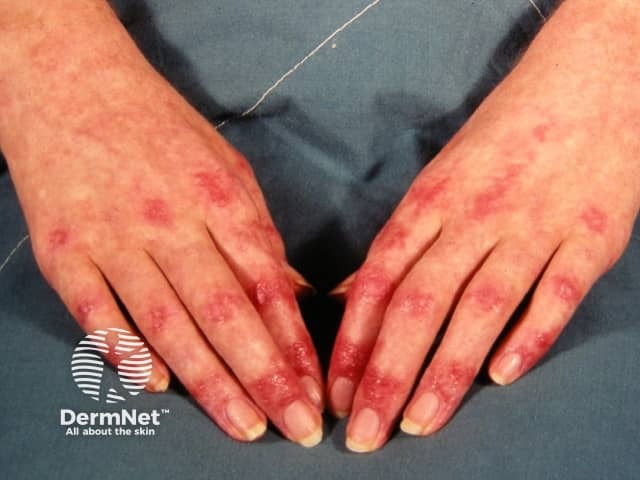
Gottron papules over the joints of the hands
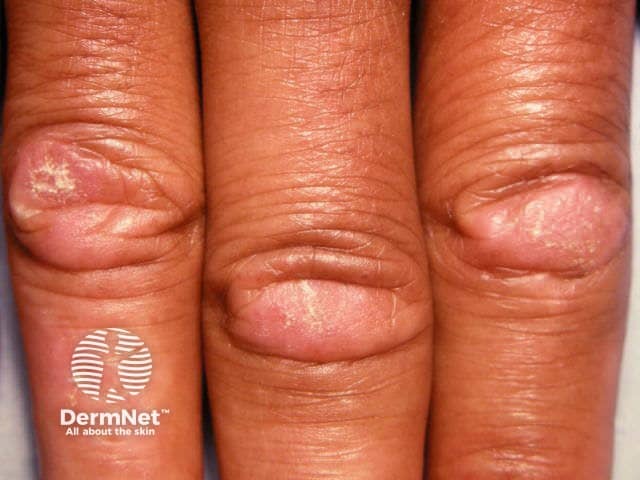
Gottron papules over finger joints
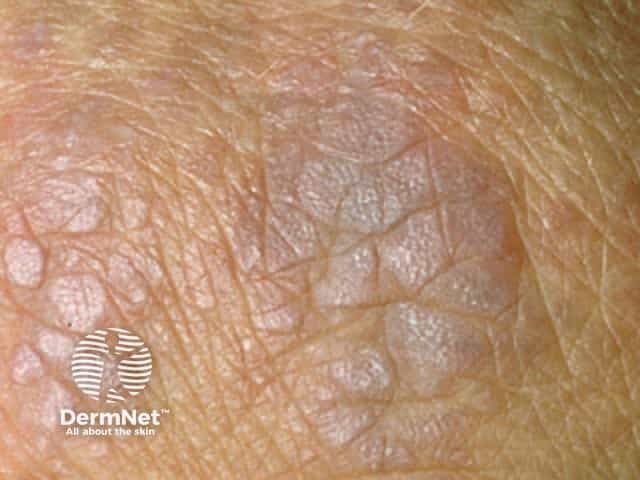
Violaceous hue of Gottron papules

Gottron sign over the knees
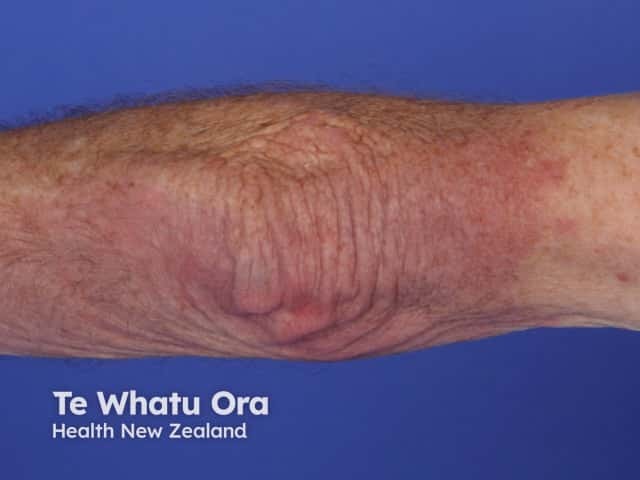
Gottron sign over the elbow
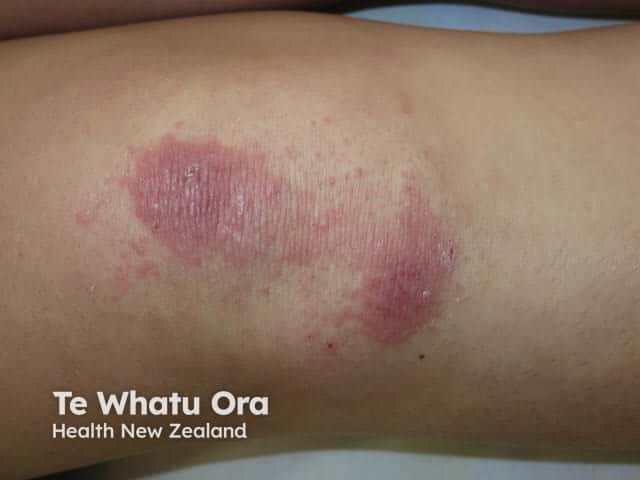
Gottron sign over a knee
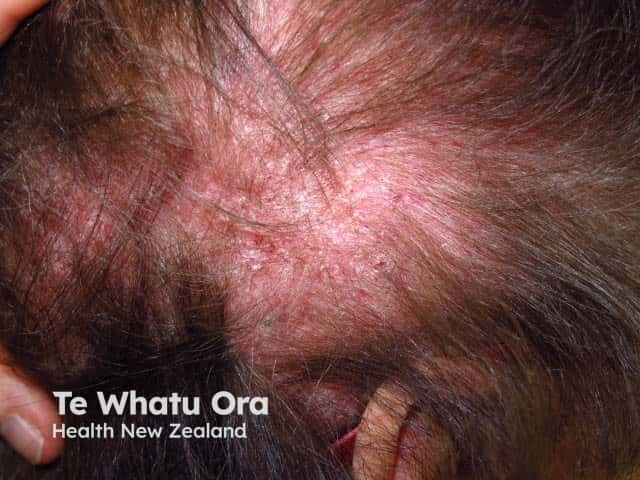
Scaly scalp in dermatomyositis
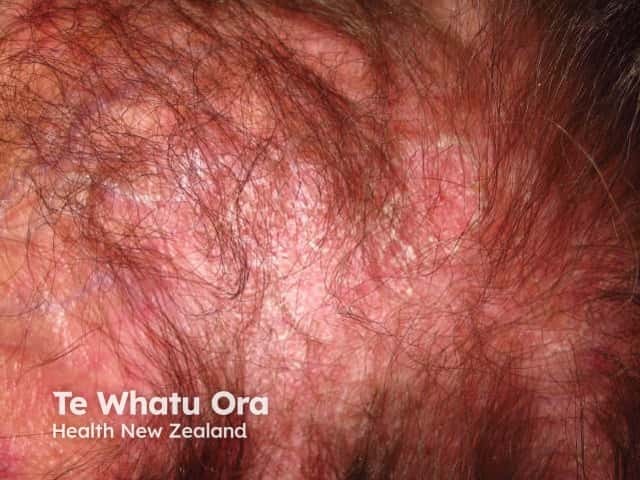
Scaly scalp with hair thinning in dermatomyositis
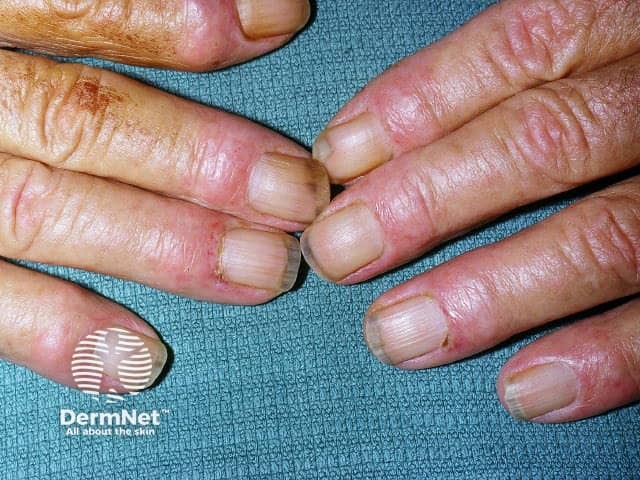
Loss of cuticles with nailfold redness and Gottron papules
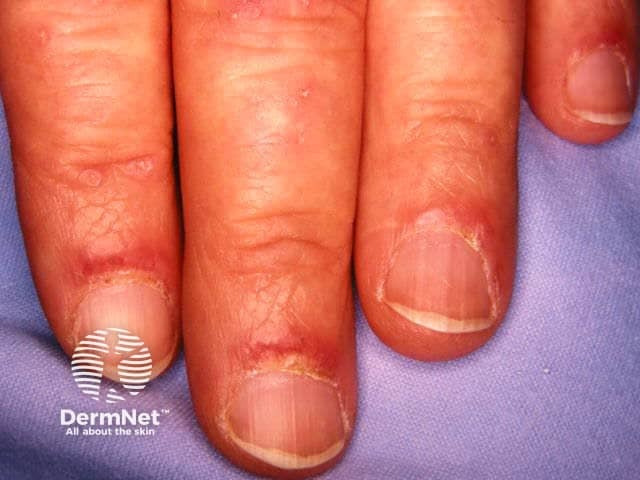
Ragged cuticles and nailfold redness
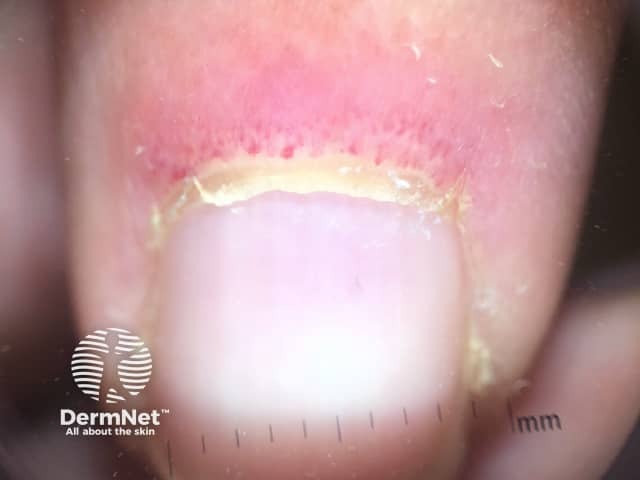
Nailfold dermoscopy showing dilated capillaries
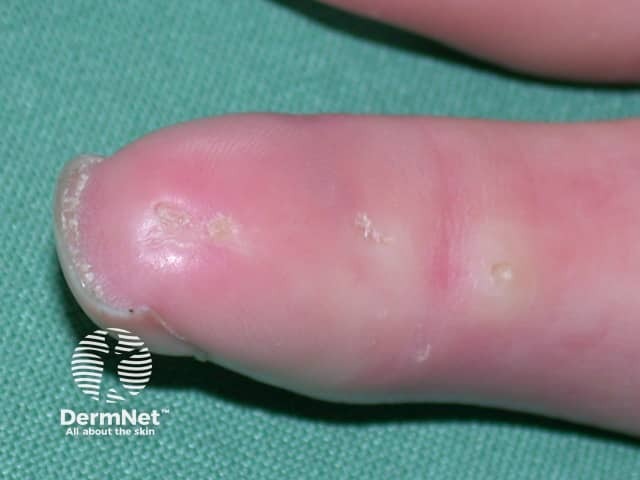
Calcinosis cutis
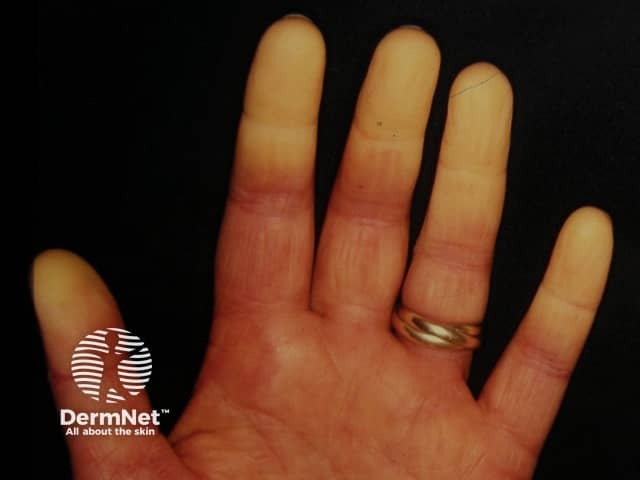
White phase of Raynaud phenomenon
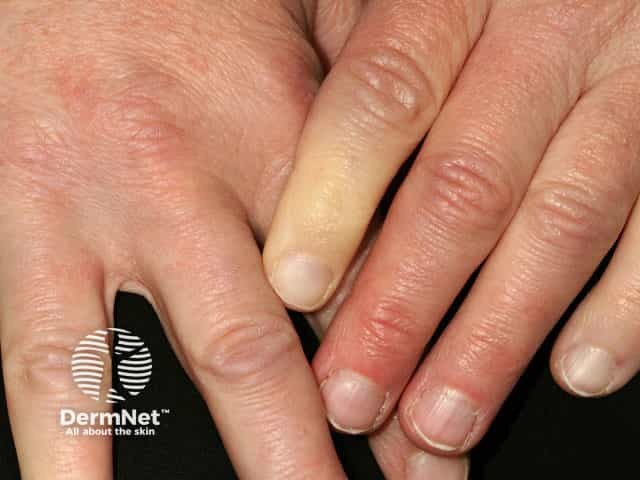
Raynaud phenomenon in dermatomyositis
Muscle weakness may appear at the same time as the skin rashes, or it may occur weeks, months, or even years later. Amyopathic dermatomyositis presents with only skin changes and no clinical evidence of myositis, although this is usually found on investigation. The myositis usually affects the proximal muscles, those closest to the trunk as in the upper arms and thighs. The first indication of myositis is when the following every day movements become difficult with weakness and fatigue:
The muscles may ache and become tender to touch.
The heliotrope rash around the eyes characteristic of dermatomyositis can be difficult to distinguish in dark skin. Other clinical signs may be required to suggest the diagnosis.
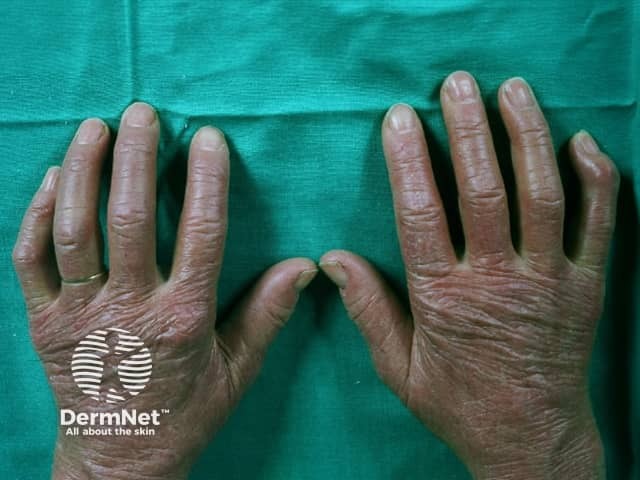
Dermatomyositis of the hands
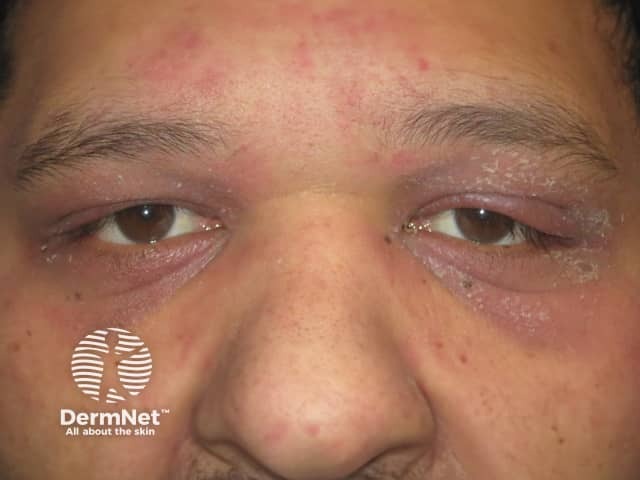
Heliotrope rash of the eyelids
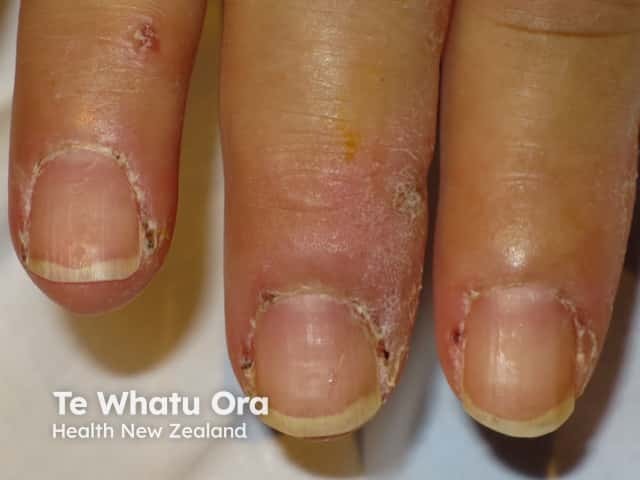
Nailfold changes in dermatomyositis
When dermatomyositis affects swallowing, it may be complicated by:
Other systemic features of dermatomyositis may include:
The diagnosis of dermatomyositis is suggested by the clinical features, and confirmed on investigations.
A skin biopsy of the rash shows an interface dermatitis similar to cutaneous lupus erythematosus, so histology alone cannot be used to distinguish the two conditions. Dermoscopy or trichoscopy may also be used for closer inspection.
Blood tests assess the myositis and autoantibody subsets.
Further investigation of the muscle disease may require:
Age-appropriate investigations for an underlying malignancy should be considered after careful history and general examination. Low risk individuals should have basic blood and urine screening, and a plain chest X ray. Intermediate and high risk individuals should, in addition, receive a CT neck, thorax, abdomen and pelvis, pelvic and transvaginal ultrasound, cervical smear, mammography, prostate-specific antigen (PSA) test, cancer antigen 125 (CA-125) test and faecal occult blood test (FOBT).
Dermatomyositis may need to be distinguished from:
General measures for the treatment of dermatomyositis include:
Measures for more specific treatment of dermatomyositis can include:
The JAK inhibitor, baricitinib, was studied in a small, 12-patient, open-label trial with clinically significant improvement seen in as early as week 4 of the study. There is a single report of deucravacitinib, another JAK inhibitor, clearing the rash of amyopathic dermatomyositis.
Apremilast was studied in 8 adult women as add-on therapy with positive results.
Dazukibart, a monoclonal antibody targeting interferon β (IFNβ), demonstrated pronounced reduction of both muscle and skin disease in dermatomyositis in a phase II trial. Anifrolumab, a type-1 interferon receptor blocker, has proved useful in several case reports.
Dermatomyositis may resolve in 20% of adults who have the condition, but most will require lifelong treatment. The prognosis of those with associated conditions such as malignancy, heart or lung involvement will be impacted and may be life-shortening.